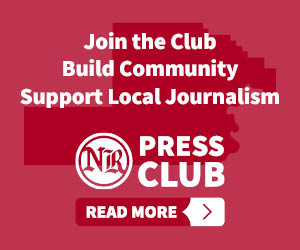Bond issue never easy sell, but good case can be made

The city’s community center has passed the century mark and its aquatic center is about to turn 70. The ravages of time have left both in a state where a serviceable makeover would run nearly as much as outright replacement, while producing a vastly inferior result.
This is, of course, hardly a news flash.
When replacement discussion commenced back on July 5, 2016, then parks chief Jay Pearson told the News-Register a new master plan the department was embarking on would likely call for construction of a new facility combining community and aquatic center functions. The only surprise is it taking nine years to get to the point of considering a bond issue that would fund the project.
The city started out by developing detailed workups comparing the renovation and replacement options. Rehab estimates ran $25-28 million for the community center and $15-17 million for the aquatic center, compared to $28-30 million and $20-21 million, respectively, for replacement.
The cost of building a combined community and aquatic center facility next to Joe Dancer Park on Riverside Drive ultimately came in at $72.5 million. That isn’t far off the original estimates from many years back, when construction was substantially cheaper — particularly when one considers its inclusion of $3.8 million for site acquisition.
The pool and rec center project serves as the core element in a $98.5 bond issue slated to appear on the city’s November general election ballot some 90 days hence. The issue would also fund $9 million of rehab work at the library and senior center, $9 million of park system improvements and $6 million of outdoor recreation facilities on the new rec center site.
Heavily used public facilities don’t last forever. Pouring millions more into these would be utter folly.
When you can get 70 to 100 years out of one — particularly when it was put up for an entirely unrelated purpose, which was the case of the former National Guard armory now serving as a community recreation and events center — you’re doing pretty well. And the city retains ownership of the sites, whose downtown core locations give them potentially significant value.
During the project’s years-long gestation, which played out in public and was thus prominently featured in the news, cost projections peaked at $156.3 million. That stemmed to a large extent from inclusion of plans to overhaul the public library, whose core Carnegie unit dates even further back into the past century than the old armory.
Feeling a bond of that magnitude wouldn’t pass muster at the polls, the city council demanded cuts, bringing it in at less than $100 million. That earned its placement on the November ballot via unanimous council vote.
The challenge for advocates now is to make their case with voters, and with all possible dispatch. They can’t afford to be outpaced or upstaged by the chorus of critics any costly new civic endeavor is certain to face.
Yes, there is a cost attached. Keeping pace with evolving community needs always comes at a cost, and there never seems to be a good time for citizens to envision shouldering it.
The advocates’ mission is persuading the community that, in this instance at least, the cost-benefit ratio leans well over onto the benefit side — that the new facility stands to serve for 75 or 100 years in its own right, and the community’s investment will seem to have paid off many times over by then.
We think that’s likely to prove the case, too. It’s easy to imagine future generations marveling at how little it took to build such a community gem, back in the day.
One thing’s for sure. The cost of replacement will rise every year it continues to be deferred.







Comments
NJINILNCCAOR
“Keeping pace with evolving community needs…”
Community needs is very hard to define.
But definition should include percentage of citizenship who would actually use and benefit from the facility.
In the case of a community/aquatic center — this percentage would be pretty low.
NO to a a fancy expensive community/aquatics center!